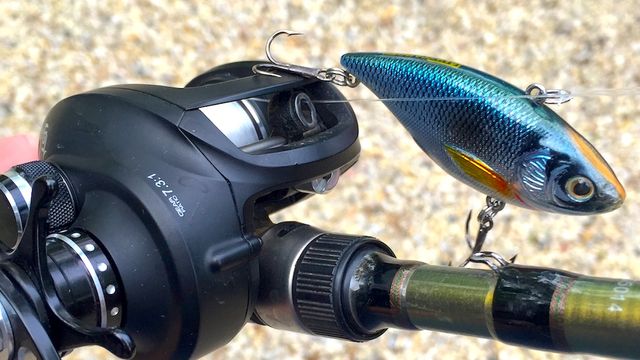
Downsizing Your Lure Presentation: The When And Where
It seems like the tackle manufacturers have recently taken the old saying “bigger is better” to heart. Cruise the aisles of any decent tackle shop these days and you’ll find racks of 10 and 12 inch worms, 6 to 9 inch jointed swimbaits, and flutter spoons that look like they’re cut from an Oldsmobile’s hubcap.Those big baits catch fish too. Top tournaments are routinely won by anglers heaving baits that look like they weigh a half pound - giving the term “splash down” a home in the bass fishing lexicon. What many anglers don’t realize though is that those bigger presentations are all about quality and not quantity, a tradeoff the tournament guys are willing to make. More often than not, hucking a big bait all day will leave you with nothing but sore shoulders and an empty livewell. On the opposite side of the coin, there are times and places when the best (sometimes only) way to trigger bites is to downsize your presentation. Downsizing accomplishes two things – it offers a profile that is more appealing to a wider range of bass, and it mimics the smaller forage found at certain times and places throughout the country. To downsize or upsize, that is the question.We’ve put together this guide to help you figure out when and where downsizing your presentations will maximize your success on the water.
Where:
On pressured lakes/rivers: When the bass have seen a million creature baits, crankbaits, and spinnerbaits – switching to a smaller presentation can pay dividends. Try finesse 3/16 or ¼ ounce jigs, 4 inch worms, and crappie sized crankbaits. When there’s nothing moving: When there’s no current, wind, or wildlife activity, it’s a great time to downsize. Fish of all species rely on natural movements to make them comfortable and provide feeding opportunities. When there’s no wind, or the current is much slower than usual, fish usually shut down, so downsizing is a great way to prolong the bite.On Small Waters: There’s a ton of great fishing to be had from shore on ponds, golf course water hazards, and creeks. Typically, these waters have excellent numbers of bass and panfish. Targeting them with smaller-than-usual presentations is a great way to have a numbers day that will keep you smiling for weeks.
When:
Post Spawn: The post spawn period can be feast or famine. Bass are coming off the bed and feeding, but the stuff they are feeding on is usually really small. Young of the year crawfish, mayflies, shad fry, and even baby bass are all commonly consumed during this period. Downsize your presentations to imitate these smaller-than-average food sources and you should be able to maintain your catches while the bass recover.In the winter: Fish are cold-blooded, and their metabolism is completely dependent on the water temperature. In the winter, the frigid water makes them lethargic and slow to commit to any feeding activity. One way to trigger strikes from cold fish is to downsize to a tiny jig, spoon, or livebait presentation and let it linger right in their face. Eventually, they’ll have to eat it.When you want numbers: As fun as big bass are to catch, it can be monotonous at times to target them specifically. Some of the most enjoyable days on the water are when you come in dog tired, a bruise on your ribs from setting the hook, no skin left on your thumb, and stinking like fish – all from catching so many bass. One of the best ways to do that is to downsize. Smaller presentations may reduce your chances at a giant, but they’re gonna get you more bites overall.
Updated July 8th, 2015 at 10:30 AM CT
